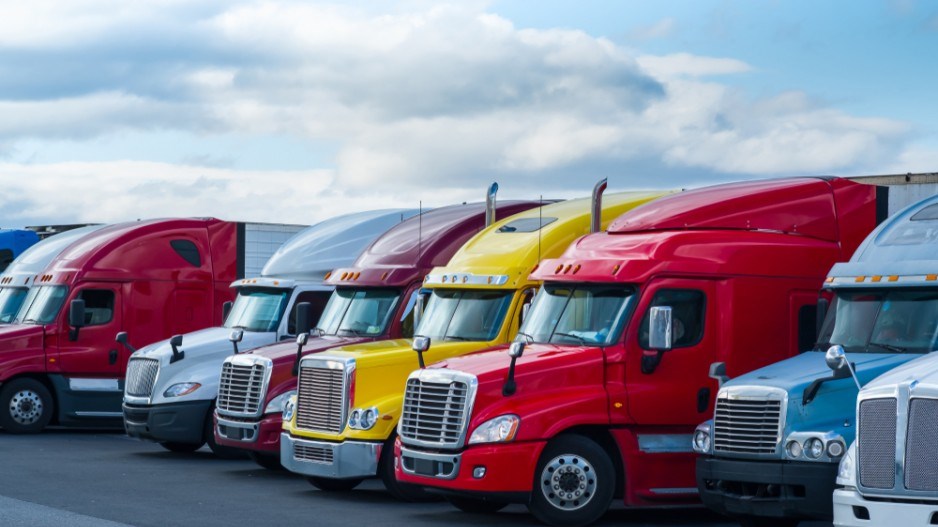Full trucking automation could mean huge cost savings.
According to McKinsey & Co., it could reduce operating costs in the U.S. trucking industry by around 45%, for savings of between US$85 billion and US$125 billion.
But the mass adoption of driverless technology will have repercussions beyond the bottom line. There were 3.5 million people in the U.S. employed as truck drivers last year, according to the American Trucking Association.
The Brookfield Institute for Innovation + Entrepreneurship says the role of transport truck driver faces a 79% chance of automation, which would affect 283,000 Canadian drivers.
The minds behind Vancouver-based Switchboard acknowledge that the electronic logging devices they are providing today could become relics of a past when sleep-sensitive humans drove cargo around the continent. Their usefulness as data collectors, however, could remain lucrative in the age of information.
It is unclear when trucking might see such a transition. Dave Earle, president and CEO of the BC Trucking Association, says good work is being done south of the border on interstate highways and terminal-to-terminal trips.
Is it on its way to B.C.?
“The biggest problem we have in B.C. with this is our infrastructure,” Earl said. “We are not connected to Canada’s multi-lane divided highway system. We still have a two-lane stretch in the Kicking Horse Canyon.”
Highway driving between warehouses, ports or terminals is one thing; urban driving is another. But even if technologists perfect city-savvy driverless tech, Earle said, B.C.’s infrastructure is at least a decade away from truly being able to support it.
“Our infrastructure here is hugely problematic,” he explained. “Part of it’s a legacy of not spending the time, energy and money that we needed to. A large part of it’s our topography. To build infrastructure in B.C. is ferociously expensive when compared with the rest of the continent. And we just haven’t frankly kept pace.”
That creates challenges for drivers today. For example, Earle said, break-bulk cargo cannot travel on Highway 1 because it isn’t allowed under highway overpasses.
“It’s bad enough that we are seeing about 75% of the oversized, overweight cargo destined for the oilpatch in Alberta and B.C. go through Houston, Texas,” he said.
“There’s no easy solution, but we’ve neglected our infrastructure for so long that we are now in a really difficult position of playing catch-up in some of the most expensive geography in the world.”




